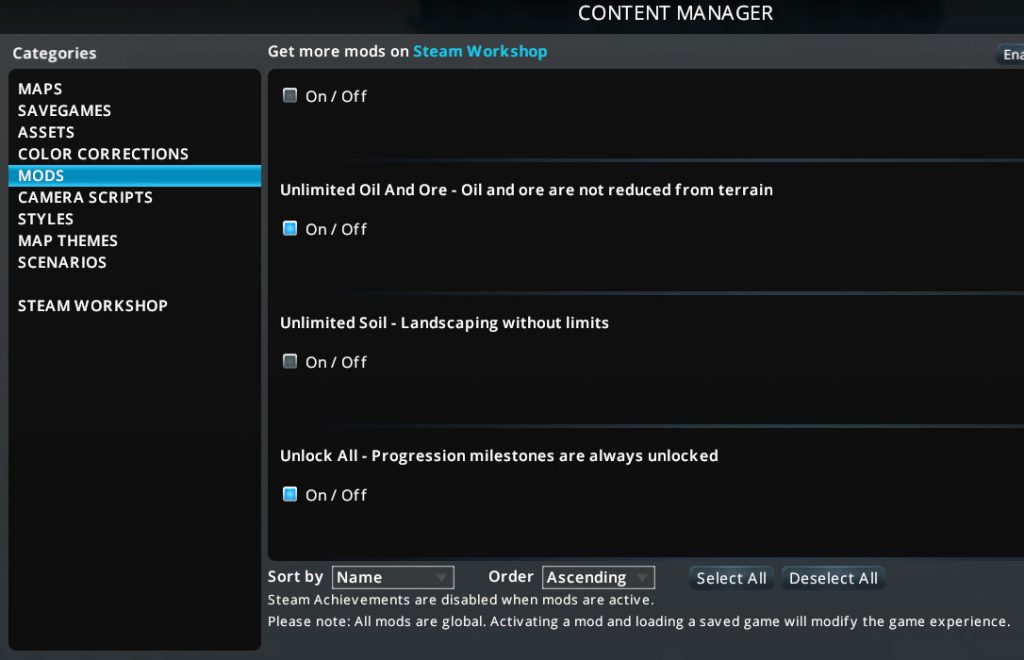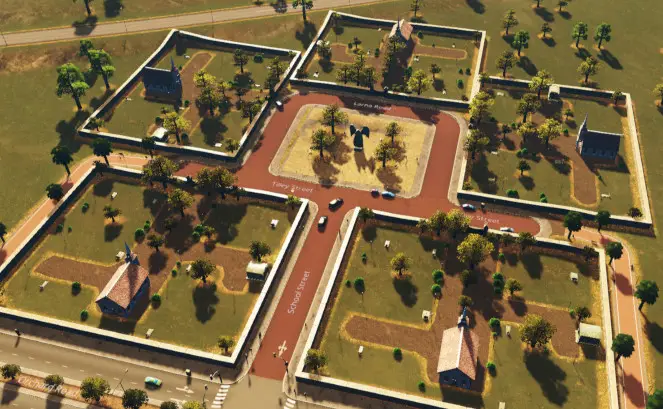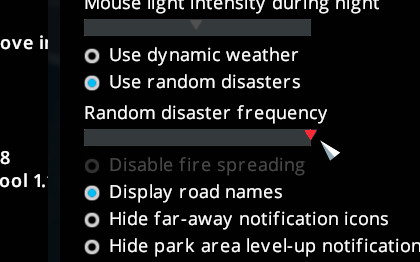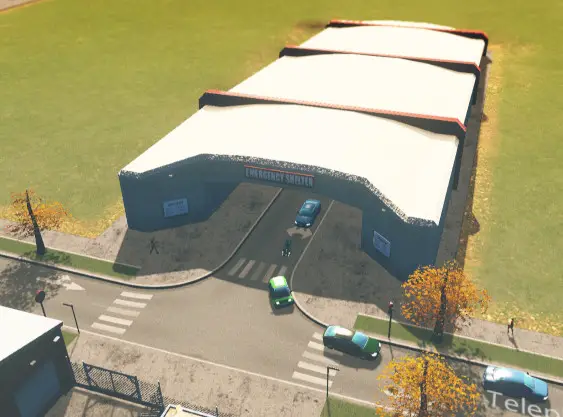Fun Specialised Cities You Have to Try for Cities Skylines
You have played through Cities: Skylines a number of times, plodding through the milestones to create generic, bit of everything, cities. How about trying a specialist city? The following list is for special and challenging city building projects to try in Cities: Skylines.
Before we go further there is word or two to say about the milestones.
Milestones
By default, the many options available to the city builder are gradually unlocked as the city’s population grows. As each population milestone is reached, new buildings and squares of land become available as well as a windfall of cash.
This milestone system is really a sort of tutorial mode for Cities: Skylines. By doling out the options in increments, the new player is presented with a gentle learning curve.
However locking up options behind population milestones, puts a hindrance on creating specialist cities from the beginning.
For most of the special cities in this article it would be well advised to play with the milestones unlocked. This can be done by going into the Content Manager from the Main Menu.
You will find the option to unlock progression milestones at the bottom of the mods category.

The availability of landmarks and monuments is not affected by unlocking milestones. They are unlocked by other prerequisites.
Special Districts vs Special Cities
Many of the special city ideas below can be implemented at the district level, for a more varied city.
The List of Specialist City Ideas
- Green City
- Dirty City
- Silent City
- Eternal City
- Bike Town
- Car Utopia
- Profitable Public Transport
- Mountain Town
- Canal City
- Tourist Trap
- Oxbridge Tech City
- Ancapistan
- Apocalyptia!
Green City – Zero Pollution
This is a fairly obvious one to try in these days of climate evangelism. Create a city with zero pollution, no water pollution and no ground pollution. You can allow some noise pollution.
Electricity
Of all the electricity generation options available, only incinerators, coal and oil power plants produce ground pollution. Only those options are forbidden to the green city.
The challenge here is that many of the other options do not produce consistent output. Solar drops off at night and wind power varies with the weather.
Water
Nearly all buildings produce sewage which is normally captured by the water system. This sewage must be dumped from the water system to prevent sewage backing up. Wherever it is dumped, in the rivers or inland, this output from the water system causes water pollution.
A true green city will only use the eco water treatment plants to process away this pollution. Water pollution can be further reduced by the use of the floating garbage collector.
Garbage
Nearly all buildings produce some garbage. Garbage must be removed and processed. The buildings that process garbage produce ground pollution. Of all the ways of dealing with garbage the recycling center is the cleanest.
That said stopping the garbage at source is important too. You can make all residential districts into self-sufficient residentials. This will greatly reduced the quantity of garbage produced there.
Policies and Services
Recycling, Recycle Plastics, Filter Industrial Waste
Dirty Industrial
This city is the polar opposite of the Green City. In this city all “green” options are banned. Raw sewage is dumped into the water, all power stations are incinerators, coal or oil powered. Industry must of the polluting kind.
The challenge here is cim health and life expectancy. To ensure plenty of new workers to replace the ones dying prematurely invest in the Child Health Centers. Do not bother with Elder Care though, old people do not work.
Silent City
The silent city is populated by hypersensitive autists and so is focused on minimising noise pollution.
A major source of noise is from traffic and public transport. In this city we will only use the quietest transport methods. We can enact the electric vehicles city policy for regular traffic. We can only use trams, bio-fuel buses and trolley buses for public transport.
The silent city is not welcoming to visitors because intercity transports are all too noisy. Commercial districts must be low density. The organic special district is acceptable but not the leisure and tourist districts. Most industries are forbidden too.
Acceptable industries are only farming, offices and tech clusters.
All roads must be tree lined, where possible.
The emphasis on noise pollution produces some differences with the Green City’s emphasis on other pollution. Landfill sites are the quietest way to dispose of garbage. Wind power is too noisy, although solar is nice and quiet. Forestry industry is green but too noisy for the silent city.
Eternal City
The cims of the Eternal City strongly abhor cremation as a means of treating their dead. In this city only cemeteries must be used to provide deathcare.

At first this is an easy challenge, but as your city grows and ages, then more and more cemeteries fill up and need to be expanded with new ones. Without crematoria destroying the dead, the dead part of your population can only increase over time.
However the map is big and cemeteries can have secondary uses as sound barriers for residential areas, so it is not so hard. Hypothetically though if you played long enough cemeteries could fill the map.
In contrast to the Dirty Industrial, the Eternal City has an incentive to invest in Elder Care. The longer the city can keep its crumblies shuffling along, the fewer cemeteries it will need.
One satisfying thing about the Eternal City is that every resident cim you ever have is still with you the whole game, albeit buried.
Bike Town
Bike Town uses the Encourage Biking policy and the ubiquitous use of cycle paths and roads with dedicated bike lanes.
Bikes are a very quiet form of transport, so Bike Town can also help build a Silent City.
Car Utopia
All the agonising we hear about getting people out of their cars and on to bikes and public transport only serves to highlight that the car is by far everyone’s preferred means of transport. The motor vehicle is personal, private, weather proof, economical, versatile, easy and decently rangy.
No other means of transport comes even close to ticking all these boxes let alone in such a seductive package. So why fight it? The car utopia surrenders to autophilia by making the car the first, second and last means of getting around.
The challenges of pollution and congestion are dealt with in car friendly ways only. Tree lined roads help with the pollution.
The car utopia should be sparing with high density zoning and aim for a more sub-urban sprawl to help prevent congestion.
Profitable Public Transport
Public transport in Skylines is by default a very unprofitable boondoggle that must be propped up by general taxation. The slim justification for it is that occasionally the ghost lines might reduce some traffic congestion by tempting cims out of their cars. That much is an accurate simulation of real life!
It does not have to be that way though. We can make public transport self-sustaining and actually deliver value by combining the high ticket prices policy, crafty planning and frugal tinkering with budget sliders down to each individual line.
In contrast to the sprawl of the car utopia, the generous use of high density zoning can help ensure plenty of customers for public transport.
Mountain Town
The Mountain Town requires a very specific map, such as the Prussian Peaks, where the terrain is heavily variable in elevations.
The challenge of the Mountain Town is that most buildings really want to be on a level surface. Roads and rails are more forgiving of elevations but still are limited to relatively gentle inclines.
Landscaping tools can create flat areas for the larger buildings but at the expense of making other areas still steeper.
Roads and rails will have to wind in meandering hairpins to scale the varying elevations.
The less often used transport options of blimps and helicopters gain some efficiency as their airborne routes can make direct routes over undulating terrain. Of course the cable car can also provide short cuts here.
Canal City
Waterfronts have the nice effect of boosting adjacent land values. The Canal City uses a network of canals to vastly increase its waterfront to land area ratio. For real life canal cities think of Venice and Amsterdam.
Canals can carry ferry routes in Cities: Skylines, so a canal city might try to use ferries as a kind of water borne bus system.
Skylines canals have no lock systems for managing varying elevations. Consequently it is best attempted on a very flat map.
Tourist Trap
The challenge of the Tourist Trap is create a city in which the larger share of revenue is obtained from tourists rather than residents. Revenue from tourists comes from their spend in commercial areas, their use of public transport and the fee accessed park areas.

Oxbridge – Tech City
Many cities have a university but Oxbridge is a university with its own city. Oxbridge is a city that exports knowledge. Its world renowned educational faculties draw in fee paying students from all over the world.
The challenge here is to create a city in which the campus areas are not just profitable but also are a substantial share of revenue too.
Naturally Oxbridge’s residents will also make use of these first class educational facilities. To keep their brains employed after education, make heavy use of the office and high tech cluster zones.
Since office, tech and campus areas are very quiet, Oxbridge could easily be combined with the Silent City.
Ancapistan
Cities: Skylines was clearly created by Keynesians because a full blooded anarcho-capitalist utopia is not possible with the vanilla mechanics. We can try to sail close to it though.
We can use toll roads to fund the roads. We can have high ticket prices to make public transport potentially self-sustaining (see Profitable Public Transport above). The for-profit education policy only reduces education upkeep but in combination with profitable campus areas it is possible break even on education without a tax subsidy.
The special fee generating park areas can make city beautification and tourism self sustaining.
Health, Fire and Police however are firmly in the grip of statist monopolists. There are no policies for dispute resolution organisations, vigilanties or concealed carry to reduce crime. Neither are there options for insurance or charity based fire services. So also with health.
You can legalise recreational drugs but weirdly that actually increases the policing budget.
Nevermind, 0% taxation may not be achievable without the extreme exploitation of toll road mechanics, but low taxation should be.
Apocalyptia
The embattled town of Apocalyptia is plagued by catastrophic disasters every other day. To play Apocalyptia get into the game menu and under “Gameplay” max out random disaster frequency.

Disaster management options are normally an afterthought but not for the rattled residents of Apocalyptia. Cims of Apocalyptia spend as much time in emergency shelters as in their own home. Make sure everyone has one!

Most disasters will tear up the streets, disrupting traffic and public transport. With that in mind the plucky planners of Apocalyptia opt for public transport options that do not rely on surface road and rails. Metro, helicopter, blimp and ferry are less easily disrupted by disasters.
Well there it is, a number of fun ideas for special cities to build in Cities: Skylines. Which do you think is the most challenging?
Share this article to my twitter @SolarCrossGames or my reddit community r/SolarCrossGames and let’s chat about it.